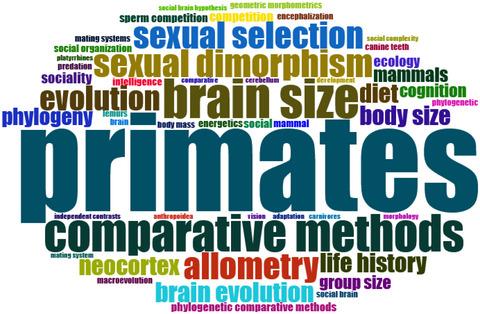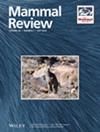Lessons from comparative primatology for understanding trait covariation and diversity in evolutionary ecology
IF 4.4
2区 生物学
Q1 ECOLOGY
引用次数: 0
Abstract
- Given the position of humans in the tree of life, comparative research on non-human primates has attracted the interest of researchers in biology, medical sciences, anthropology, psychology, and sociology. Covariation of species' phenotypes has been of particular interest.
- Learning from the historical development of comparative research with primates should thus be particularly valuable for evolutionary ecology and to improve understanding of phenotypic integration and diversity. Such learning would also help identify knowledge gaps, disputed questions, and new avenues of both basic and applied research in relation to the evolution of primate features and the conservation of our close relatives.
- We conducted a historical assessment through a non-systematic review and a systematic review, focusing on how the integration of different research lines in evolutionary ecology focused on primate phenotypic covariation unfolded throughout the 20th Century. The non-systematic review allowed us to reconstruct the history of the discipline from its earliest origins, when bibliometric assessments were more limited in scope, and to identify the most appropriate keywords for the systematic review. We employed a standard protocol for the systematic review, applying two complementary analyses: co-occurrence of keywords and bibliographic coupling of references. These analyses described the development of the conceptual and intellectual structures of comparative primatology from 1966 to 2020.
- By identifying the most influential researchers and concept interrelations, we highlight primate phenotypes critical for the development of the discipline (in particular, brain and body sizes and behavioural patterns), showcasing the reach of these investigations for evolutionary ecology. Overall, our findings emphasise the crucial role that comparative primatology has played in developing the study of phenotypic integration and the very onset of phylogenetic comparative methods.

比较灵长类学对理解进化生态学中性状共变和多样性的启示
鉴于人类在生命之树上的地位,对非人类灵长类动物的比较研究引起了生物学、医学、人类学、心理学和社会学研究人员的兴趣。物种表型的共变一直是特别感兴趣的。因此,从灵长类动物比较研究的历史发展中学习对于进化生态学和提高对表型整合和多样性的理解特别有价值。这样的学习也将有助于识别与灵长类特征进化和近亲保护有关的知识空白、争议问题和基础研究和应用研究的新途径。我们通过非系统回顾和系统回顾进行了历史评估,重点关注了20世纪灵长类动物表型共变的进化生态学中不同研究线的整合如何展开。当文献计量学评估在范围上比较有限时,非系统综述允许我们从其最早的起源重建学科的历史,并为系统综述确定最合适的关键词。我们采用标准方案进行系统评价,采用两种互补分析:关键词共现和参考文献的书目耦合。这些分析描述了比较灵长类学从1966年到2020年的概念和智力结构的发展。通过确定最有影响力的研究人员和概念相互关系,我们强调了灵长类动物表型对该学科的发展至关重要(特别是大脑和身体大小和行为模式),展示了这些研究对进化生态学的影响。总的来说,我们的研究结果强调了比较灵长类学在发展表型整合研究和系统发育比较方法的起源中所起的关键作用。
本文章由计算机程序翻译,如有差异,请以英文原文为准。
求助全文
约1分钟内获得全文
求助全文
来源期刊

Mammal Review
生物-动物学
CiteScore
12.20
自引率
4.10%
发文量
29
审稿时长
>12 weeks
期刊介绍:
Mammal Review is the official scientific periodical of the Mammal Society, and covers all aspects of mammalian biology and ecology, including behavioural ecology, biogeography, conservation, ecology, ethology, evolution, genetics, human ecology, management, morphology, and taxonomy. We publish Reviews drawing together information from various sources in the public domain for a new synthesis or analysis of mammalian biology; Predictive Reviews using quantitative models to provide insights into mammalian biology; Perspectives presenting original views on any aspect of mammalian biology; Comments in response to papers published in Mammal Review; and Short Communications describing new findings or methods in mammalian biology.
 求助内容:
求助内容: 应助结果提醒方式:
应助结果提醒方式:


